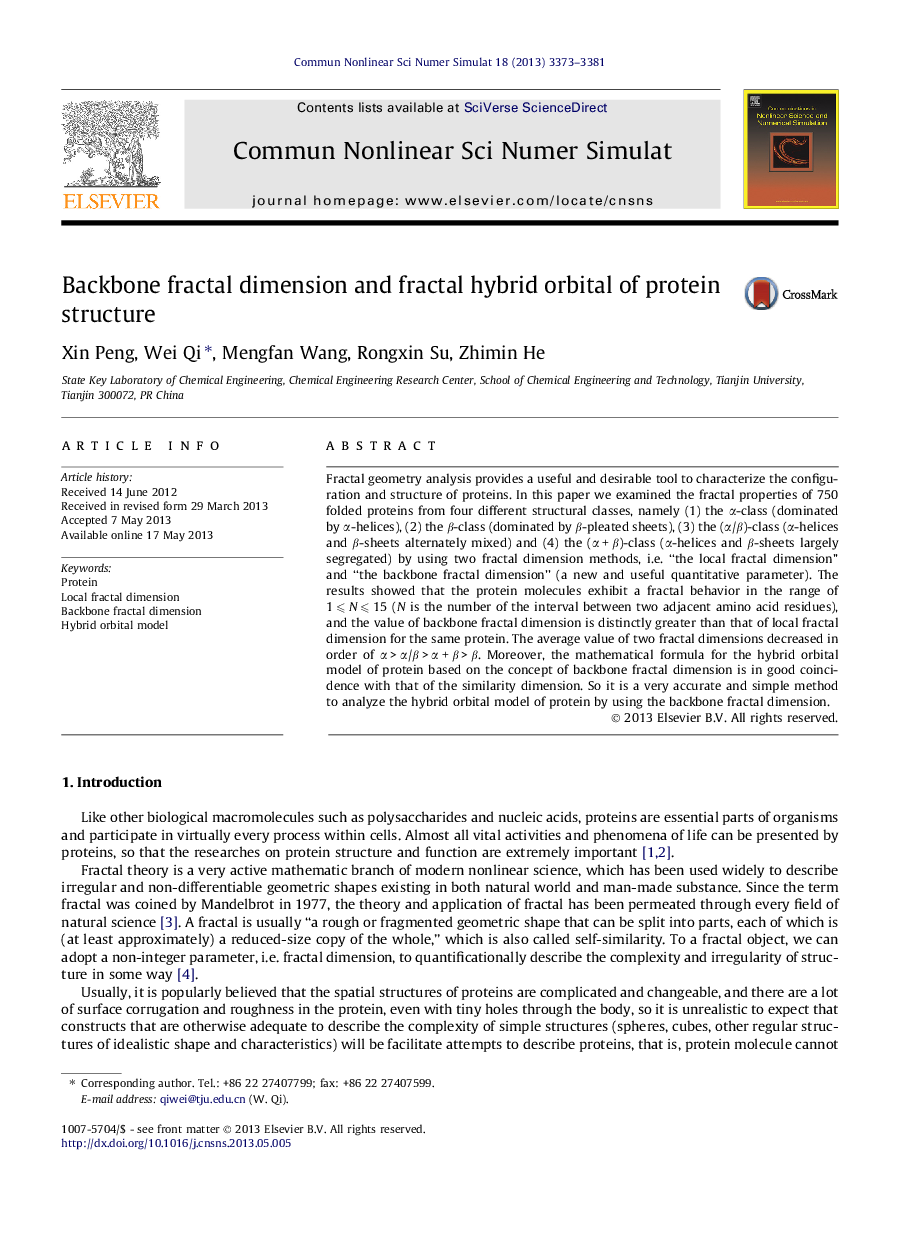| Article ID | Journal | Published Year | Pages | File Type |
|---|---|---|---|---|
| 758416 | Communications in Nonlinear Science and Numerical Simulation | 2013 | 9 Pages |
•Investigated the fractal properties of 750 proteins by DB and DL.•The protein molecule is a fractal object in the range of 1 ⩽ N ⩽ 15.•The value of DB is greater than that of DL for the same protein.•Obtained the hybrid orbital model of protein based on DB.
Fractal geometry analysis provides a useful and desirable tool to characterize the configuration and structure of proteins. In this paper we examined the fractal properties of 750 folded proteins from four different structural classes, namely (1) the α-class (dominated by α-helices), (2) the β-class (dominated by β-pleated sheets), (3) the (α/β)-class (α-helices and β-sheets alternately mixed) and (4) the (α + β)-class (α-helices and β-sheets largely segregated) by using two fractal dimension methods, i.e. “the local fractal dimension” and “the backbone fractal dimension” (a new and useful quantitative parameter). The results showed that the protein molecules exhibit a fractal behavior in the range of 1 ⩽ N ⩽ 15 (N is the number of the interval between two adjacent amino acid residues), and the value of backbone fractal dimension is distinctly greater than that of local fractal dimension for the same protein. The average value of two fractal dimensions decreased in order of α > α/β > α + β > β. Moreover, the mathematical formula for the hybrid orbital model of protein based on the concept of backbone fractal dimension is in good coincidence with that of the similarity dimension. So it is a very accurate and simple method to analyze the hybrid orbital model of protein by using the backbone fractal dimension.
